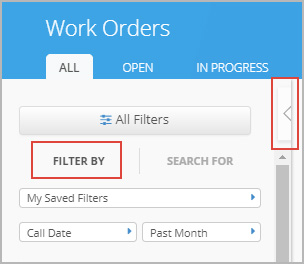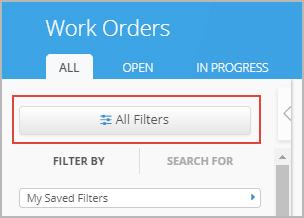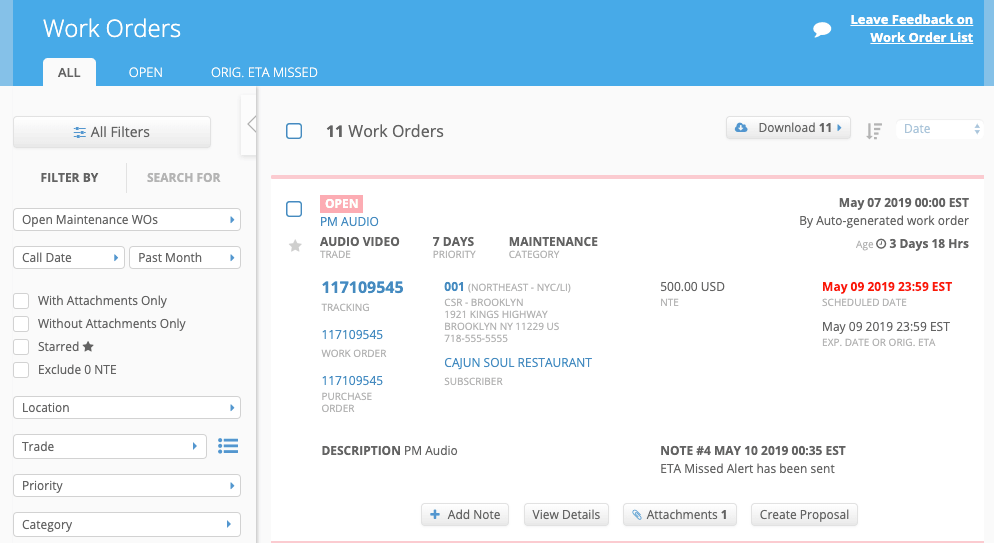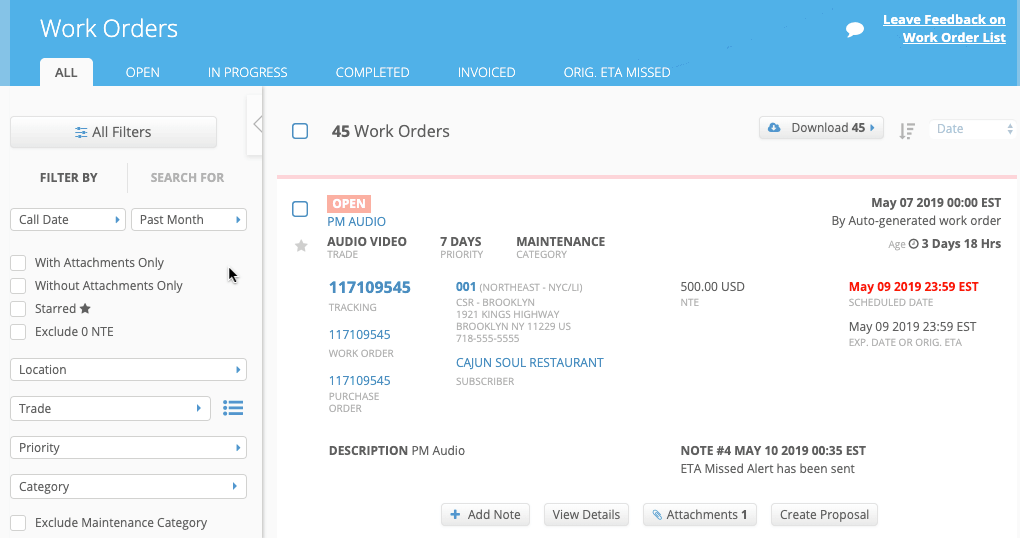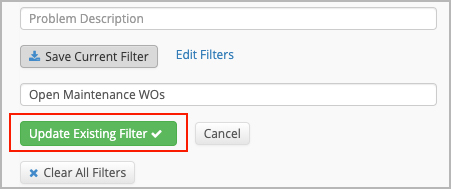Filters help you find work orders you need to view or take action on. Use one of the following options to filter work orders:
- Filter By tab located on the left panel of the Work Orders List
- All Filters pop-up appearing when you click the All Filters button
Most of the filters are available in both options, but the All Filters pop-up has a few additional filters that you may find useful.
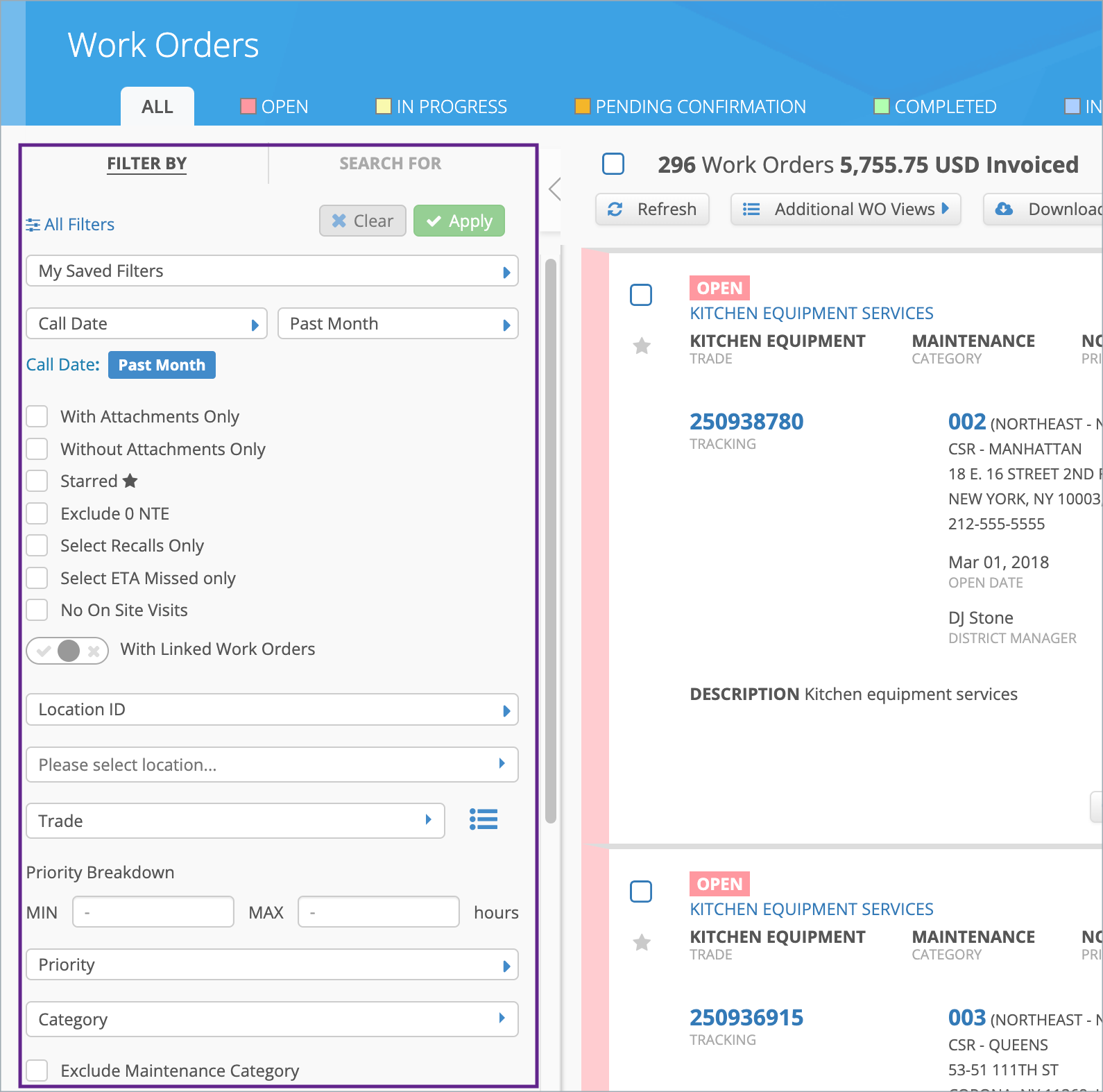
Filter Criteria
You can filter work orders by date, amount, location, trade, category, subscriber, and other criteria.Filters available both on the Filter By tab and in the All Filters pop-up:
- My Saved Filters. Select a saved filter to view matching work orders.
- Date. You may filter work orders by the following date types:
- Call date
- Scheduled date
- Completed date
- Invoice date
- Follow-up date
- No Activity
For large businesses and/or corporations with work orders over 500,000 is reduced to 6 months when using the No Activity filter.
- Range. Use this filter to find work orders for a specific time period. Note that you set the range for the selected Date. The available options are:
- Today
- Past month
- Past three months
- Past year
- Specific date range
- Older than, which helps you locate work orders with the date older than the number of days defined in this filter. This option is available for Open and In Progress work orders only.
- With Attachments Only and Without Attachments Only. Select one of these checkboxes to get work orders with or without attachments.
- Starred. Locate work orders that you marked with a star.
- Exclude 0 NTE. Exclude work orders with a zero NTE amount.
- Location: Use this option to view work orders filtered by any of the following location detail:
- Location ID
- Location Name
- Address
- Region
- District
- City
- State/Province
Country
For the Location ID, Region, District, State, and Country criteria, a dynamic drop-down list appears below where you can select the desired item or type in the name to narrow the search. For the Location Name, Address, and City criteria, type the information in the field below, and then press Enter.
You can filter your work orders by multiple location IDs, regions, districts, or states/provinces. When filtering by location name, address, city, country, or store open date, however, only one option can be specified.
- Trade. Use this dropdown to select trades one by one.
Alternatively, click the list icon to the right of the dropdown to view all trades in a pop-up. Select or deselect as many trades as required, and then click OK. The trades that you’ve selected appear below the Trade dropdown. - Priority Breakdown. Enter the minimum and maximum value in hours to view the work orders with the entered hourly priority.
- Priority. View work orders of the selected priority. Select all or desired priorities in the drop-down list by checking the boxes next to the priority names, and click Filter.
- Category. Use this dropdown to select categories one by one. The categories that you’ve selected appear below the Category dropdown.
- Exclude Maintenance Category. Hide all maintenance work orders.
Status. Apply this filter to view work orders in multiple statuses. When you need to get work orders only in one particular status, click the required tab at the top of the Work Orders List. See Identifying Work Order Statuses for more details.
The status tabs at the top of the Work Orders List — All, Open, In Progress, Completed, Invoiced — display work orders in the corresponding status. The All tab displays work orders in all statuses. However, to view work orders in multiple statuses at a time, for example, both in the Open and In Progress statuses, use the Status filter.
- Extended Statuses. Use this filter to view work orders in one or multiple extended statuses at a time. Open the drop-down list, select the required extended statuses, and click Filter. The page refreshes, and the selected extended statuses appear under the Extended Statuses dropdown.
- Exclude Invoiced Calls. Hide invoiced work orders from the list.
- Select Verbal Approvals Only. List work orders where changes to the NTE amount were approved verbally and marked in the work order.
- Subscriber. View work orders submitted by specific clients. To select a subscriber, click the Subscriber dropdown, and select the desired client name. Repeat to add more subscribers.
- Caller. Filter work orders by name of a specific caller, i.e., a name entered by your subscriber when creating a work order.
- Created By. Filter work orders by account used to create those work orders. Note that when multiple users create work orders using the same account — for example, a single account for a location with multiple users — all those work orders appear on the list.
- Problem Description. Filter work orders by problem description. Type in the desired keywords, and press Enter.
Filters available only in the All Filters pop-up:
- Select Recalls Only. List work orders created when the same problem re-occurs within 30 days after the original work order was completed.
- Select ETA Missed Only. Filter work orders where you missed the estimated time of arrival.
- No On Site Visits. List Open and In Progress work orders that have no check-in entries made by technicians via either the Interactive Voice Response (IVR) system or the ServiceChannel Provider mobile app.
- Asset Type. Find work orders with a specific asset type.
